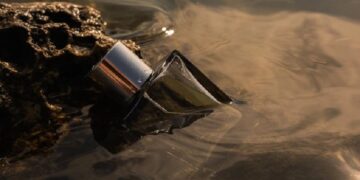Where do you buy Krammo-borderline?
Gres is the latest type of papricopic, which is used to work with all types of surface. Gres successfully competes with both the most traditional ceramics and with materials from natural stone. In this regard, this material is prophesy for a great future. Unamalized tiles (without glaze) have a variety of shades and colors, its technical characteristics are truly outstanding.
What are the features of porcelain?
The material has a constancy of color and pattern, depth through its entire volume. This provides a special composition of quartz sand (clean), several varieties of clay, mineral additives, a field spar, coloring pigments. As the latter, more traditional are metals oxide. The natural components of Gres are not a source of the radioactive background, which ensures absolute safety for health.
How the strength of porcelain tiles is achieved?
High hardness and strength are achieved by unique technology of firing and pressing, which betrays the material with good strength properties. Pressing occurs under pressure (five hundred kg/sq. centimeter) with small segments with an area of about 4 cm. Ceramic granite is burned in a temperature interval of 1200-1300 degrees. In the process of firing, the material is restructured when a monolith forms when sintering raw materials. Having cooled, it turns out to be a strong and solid material resistant to abrasive effects.
Gres has an exceptionally low water absorption. Even natural granite has a slightly larger level of moisture absorption than gres. In this regard, very often porcelain tile is characterized by high frost resistance.
The gamut of such granite is diverse and wide, the materials differ in the type of surface and the method of manufacturing the pattern.
Keramo-borderline has certain properties that cannot be attributed to other building and facing materials, and the main ones are durability and constancy, which definitely helps a person determine the conclusion when buying a typical material.
















